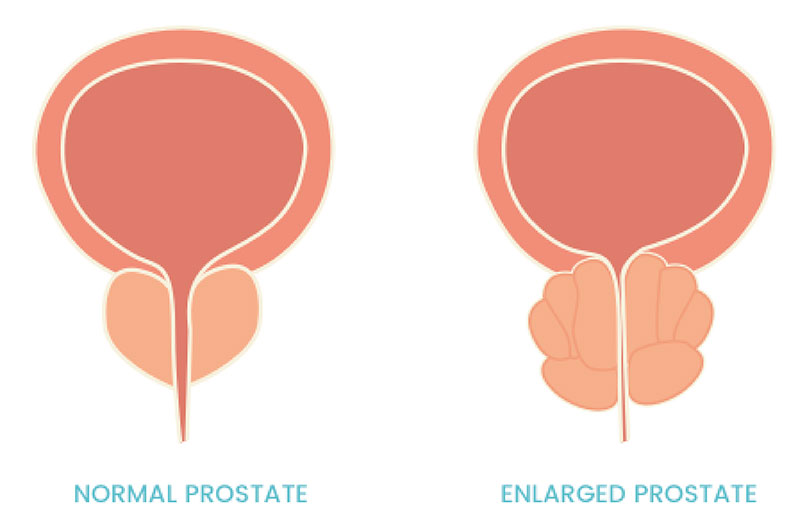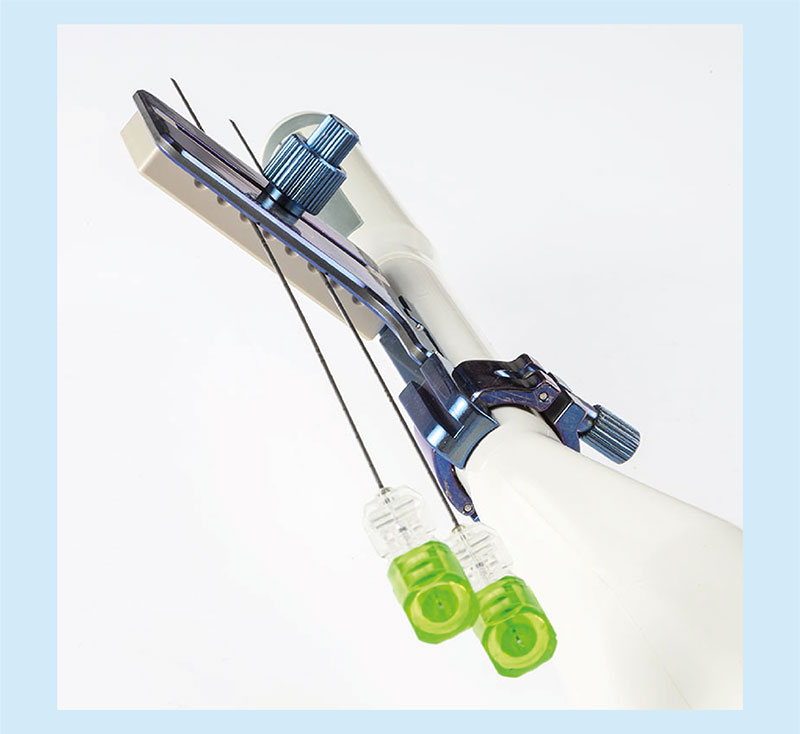
What is SoracteLite?
SoracteLite is an innovative and micro-invasive treatment for BPH. It is a non-surgical procedure which, by exploiting laser energy, obtains a significant reduction in the volume of the prostate, consequently freeing up the urethral channel from the compressive processes that obstruct normal urinary flow. This ensures a gradual resolution of symptoms and progressive improvement in the quality of life for the patient, who will urinate less frequently with a more powerful flow, while the number of night-time urinations is reduced or eliminated, and the risk of urinary tract infections decreases.
SoracteLite is an alternative treatment to surgery and other invasive techniques that use a transurethral approach. It differs from these in the following ways:
- 'In-situ treatment method (thermal ablation without tissue removal)
- Absence of complications involving the urethra
- Reduced hospitalisation (daytime hospital procedure)
- Rapid recovery of the patient (a few hours after treatment).
What is Benign Prostatic Hyperplasia?
Benign Prostatic Hyperplasia (BPH), also known as prostatic adenoma, is a prostate disease. It causes an increase in prostate volume due to the increase in the number of cells, mainly in the central part of the gland around the urethra. It is a benign type of growth that causes compression of the surrounding tissues.

How common is BPH?
Benign Prostatic Hyperplasia is linked to ageing and over the years it can cause compression and distortion of the urethra, thus obstructing the flow of urine. It is a very common condition. The prevalence rate in men over the age of 50 suffering from BPH, is between 50-75%; this percentage rises to 80% in men over the age of 70.
* Egan The Epidemiology of Benign Prostatic Hyperplasia Associated with Lower Urinary Tract Symptoms Prevalence and Incident Rates, Urol Clin N Am 43 (2016),

How SoracteLite works
SoracteLite uses low power laser energy (typically 3 Watts) for a few minutes. Laser radiation is transmitted by means of optical fibres, inserted percutaneously in the organ through 21G needles (less than one millimetre). The portion of thermally treated tissue is naturally reabsorbed by the gland in the following weeks, resulting in a reduction in the prostate volume and the resolution of symptoms.
Treatment effectiveness is demonstrated by the resolution of symptoms and an improvement in the quality of life of the patients treated. The monitoring of the patients has shown that the SoracteLite treatment is beneficial in just a few days and that the improvement is stable over time.
Clinician Information
The micro-invasiveness and safety of the treatment are supported by the following aspects:
- Type of approach: SoracteLite is the only treatment that uses a transperineal approach, with the insertion of 21G needles to reach the area to be treated. Thus avoiding traumatic interactions with the last section of the urinary tract (urethra and bladder) and the complications often associated with the transurethral approach.
- No prostate tissue removal: laser energy is applied directly inside the prostate, causing a coagulation of the tissue which, being naturally reabsorbed by the gland, causes a volumetric reduction, thus preserving its anatomy and functionality.
- Non-surgical treatment: it drastically reduces the complications related to surgery such as bleeding, infections, impotence, and retrograde ejaculation. It also makes it possible to treat patients suffering from coagulation disorders who are on anticoagulant therapy that cannot be suspended or modified.
- No general or loco-regional (spinal) anaesthesia: the SoracteLite treatment is performed under local anaesthesia, thus avoiding the risks associated with anaesthetic procedures.
SoracteLite is an innovative treatment, still not widely used, although rapidly expanding. SoracteLite is often compared to other treatments using laser technology, such as green laser, thulium or holmium laser. These are all treatments which, unlike SoracteLite, involve an invasive and destructive surgical approach to the organ.
Advantages
- Transperineal approach for prostate applications
- Preservation of healthy tissue and organ’s function
- Highly predictable and repeatable coagulation volume
- Use of fine, non-traumatic needles
- No general anaesthesia
- Short duration of the treatment (a few minutes)
- Rapid recovery
- No or insignificant post-treatment pain

Click here to download your PBLite Brochure: PBLite Brochure (English)
